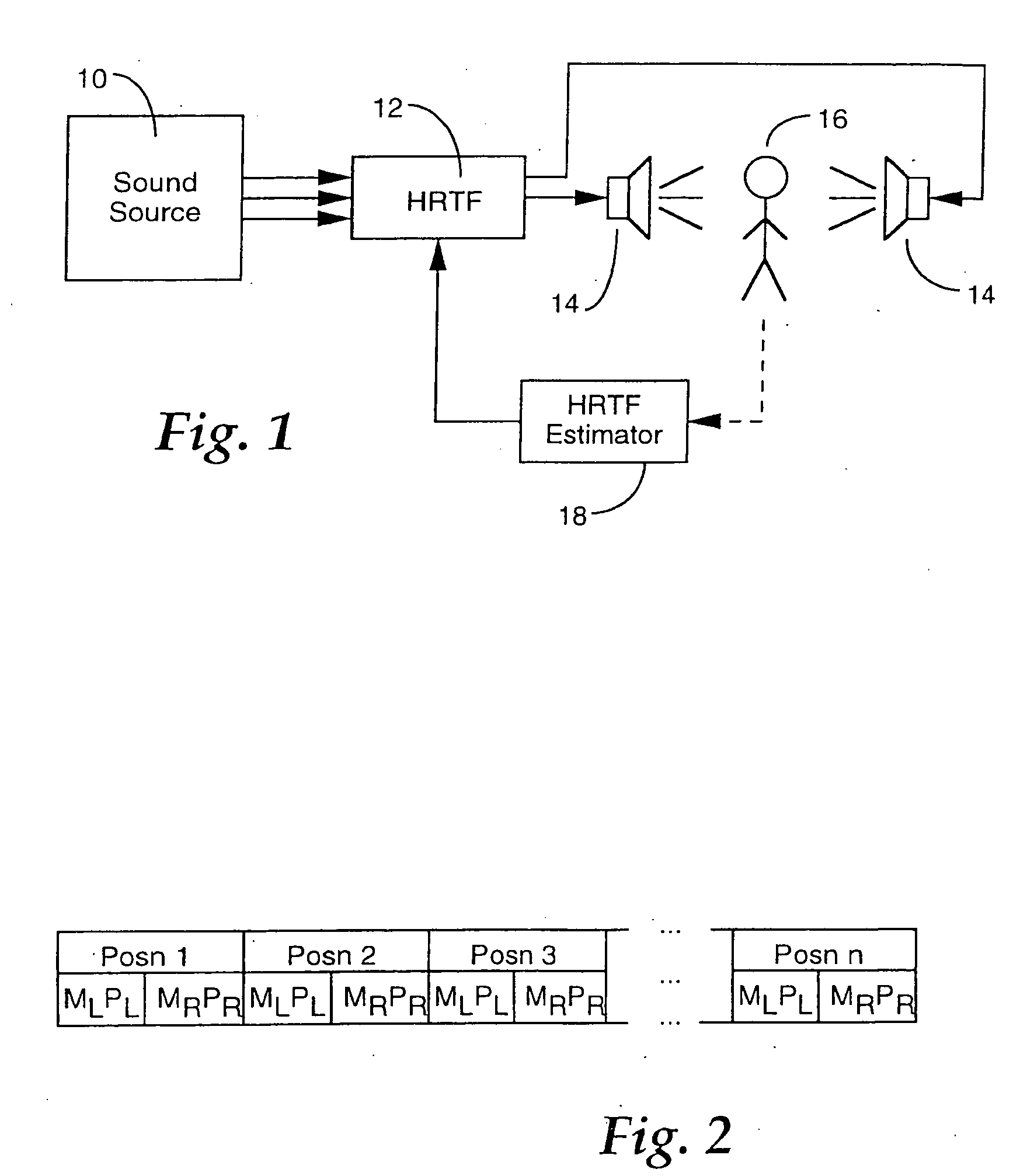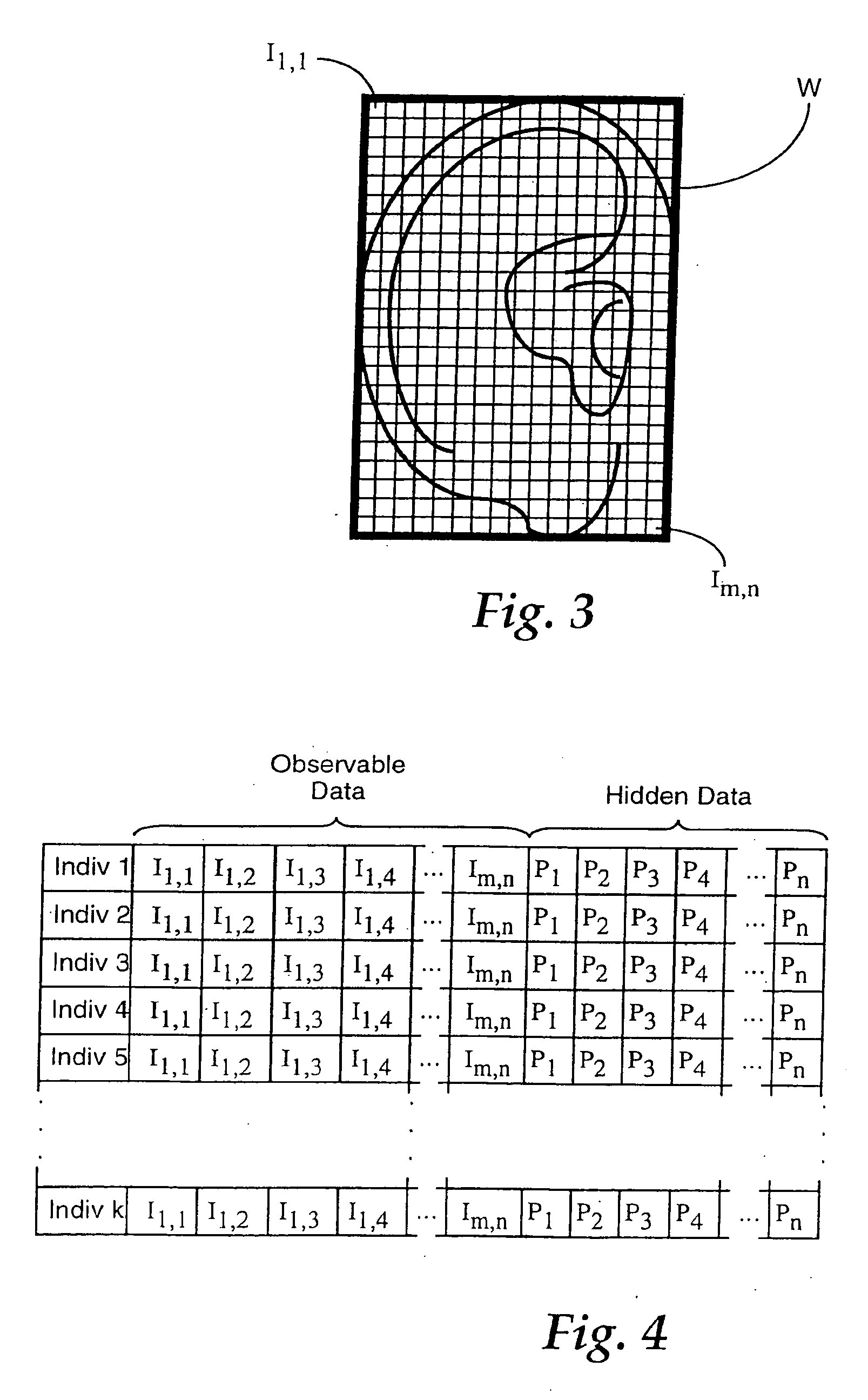Estimation of head-related transfer functions for spatial sound representation
a transfer function and spatial sound technology, applied in the field of sound reproduction, can solve the problems of inability to distinguish between different virtual sources of sounds, appreciable errors can occur, and limited spatial characteristics of sounds perceived by users
- Summary
- Abstract
- Description
- Claims
- Application Information
AI Technical Summary
Benefits of technology
Problems solved by technology
Method used
Image
Examples
Embodiment Construction
[0016] Generally speaking, the present invention is directed to the estimation of an HRTF for a particular listener, based upon information that is available about physical characteristics of that listener. Once it has been determined, the HRTF can be used to generate spatial sound that is tuned to that listener's auditory response characteristics, so that the listener is able to readily identify and distinguish between sounds that appear to come from spatially diverse locations. An example of a system which employs the HRTF for such a purpose is schematically illustrated in FIG. 1. Referring thereto, various sounds that are respectively associated with different locations in a virtual environment are generated by a sound source 10, such as a synthesizer, a microphone, a prerecorded audio file, etc. These sounds are transformed in accordance with an HRTF 12, and applied to two or more audio output devices 14, such as speakers, headphones, or the like, to be heard by a listener 16. T...
PUM
 Login to View More
Login to View More Abstract
Description
Claims
Application Information
 Login to View More
Login to View More - R&D
- Intellectual Property
- Life Sciences
- Materials
- Tech Scout
- Unparalleled Data Quality
- Higher Quality Content
- 60% Fewer Hallucinations
Browse by: Latest US Patents, China's latest patents, Technical Efficacy Thesaurus, Application Domain, Technology Topic, Popular Technical Reports.
© 2025 PatSnap. All rights reserved.Legal|Privacy policy|Modern Slavery Act Transparency Statement|Sitemap|About US| Contact US: help@patsnap.com



